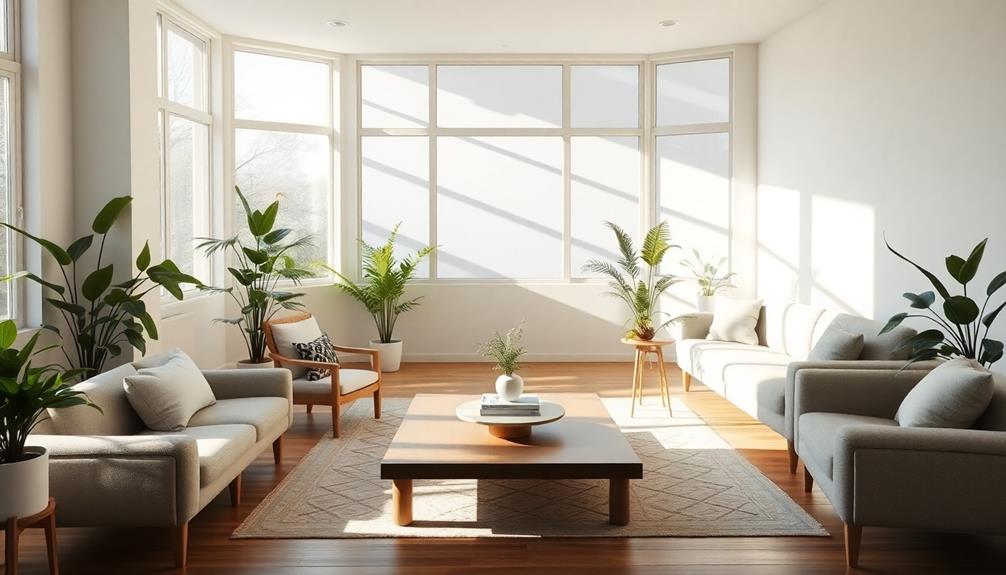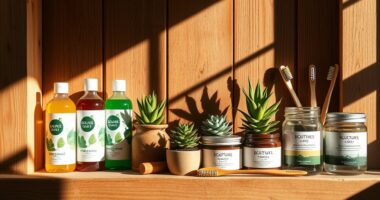Transitioning from brunette to blonde in just 10 hours sounds exciting but can be risky for your hair’s health. Achieving such a dramatic change often requires multiple sessions, especially if your hair has been previously colored. It’s crucial to prioritize hair health during this process, using gentle products and techniques that minimize damage. Regular maintenance and touch-ups are necessary to maintain your new look. If you’re curious about the best practices for a successful transition, there’s more to explore.
Key Takeaways
- Achieving blonde from brunette in one session is rare and usually involves significant risk of hair damage.
- A consultation with a stylist is crucial to devise a safe, personalized transition plan.
- Hair health should be prioritized, using gentle products and minimizing bleach exposure during the process.
- Regular maintenance, including touch-ups every 8-10 weeks, is essential to keep the blonde looking fresh.
- Transitioning can take time, often requiring multiple sessions spaced weeks apart for optimal results.

Transitioning from brunette to blonde isn’t just a quick change; it often takes time and careful planning. If you’re considering this transformation, know that it usually requires multiple sessions, especially if you’re starting with dark hair. It’s rare to achieve your desired blonde shade in a single visit unless your hair is virgin and hasn’t been colored before.
Transitioning to blonde from brunette is a journey that requires time, planning, and often multiple salon visits.
Bleaching is a common method for lightening hair, but it can cause significant damage if not done correctly. This is why a consultation with your stylist is essential—they’ll help you determine the best approach based on your hair’s starting color and your desired outcome. You might find that to avoid damaging your hair, the transition could take up to two years, with sessions spaced weeks apart. Regular touch-ups every 8-10 weeks will also be necessary to keep that fresh blonde look. Regular use of glycolic acid products can also help improve hair texture, which is crucial during this transition.
During the process, you’ll want to prioritize hair health. Using gentle products and minimizing over-processing is crucial. Techniques like sectioning and employing lower-volume developers can help manage the risk of damage. You may even consider color removers to lessen the need for bleach, making the transition smoother. Assessing hair condition is vital to keep your hair nourished throughout this journey.
Once you achieve that stunning blonde, maintenance becomes your new best friend. Investing in color-protecting shampoos and conditioners can extend the life of your color. Regular trims will prevent split ends and help maintain your hair’s overall health.
Lastly, remember that hair type matters. If you’ve previously colored your hair, the transition might take longer. Hair porosity and thickness also play a role in how well the color absorbs, so keep that in mind as you start this exciting journey. Embrace the process, and soon enough, you’ll find yourself rocking that beautiful blonde!
Frequently Asked Questions
How Often Should I Maintain My Blonde Hair Color?
To maintain your blonde hair color, it depends on the shade you choose.
If you go for platinum or icy blonde, you’ll need touch-ups every 4-6 weeks.
Balayage or honey blonde can stretch to 6-10 weeks.
For full coverage, aim for the same 4-6 week interval to keep those roots looking fresh.
Always use color-safe products and consider regular trims to keep your hair healthy and vibrant between visits.
Can I Do This Color Change at Home?
Transforming your hair color at home can feel like stepping into a new chapter of your life.
While you can achieve blonde shades on your own, be cautious. Bleaching requires careful preparation and product selection. You’ll need to ensure your hair’s in good condition to avoid damage.
If you’re unsure, don’t hesitate to consult a professional. They can guide you, ensuring you get the look you want without compromising your hair’s health.
What Products Should I Use for Blonde Hair Care?
For blonde hair care, you should use specialized products that maintain your color and health.
Start with a purple shampoo like Redken Blondage to neutralize brassiness. Incorporate a nourishing hair mask, such as Surface Hair’s treatment, to repair damage.
Don’t forget heat protection, using Kérastase Blond Absolu before styling. Regularly apply moisturizing serums and conditioning products to keep your hair hydrated and shiny.
Consistency is key for vibrant, healthy blonde locks!
Will My Hair Texture Change After Bleaching?
Yes, your hair texture will likely change after bleaching.
You might notice a loss of bounce, increased frizz, or even that your curls become straighter. Bleaching can also make fine hair feel thicker but more brittle.
Remember, everyone’s hair reacts differently, so outcomes can vary.
To manage these changes, consider deep conditioning regularly, avoiding heat styling, and using moisturizing treatments to help maintain your hair’s health and texture.
How Can I Prevent Damage During the Coloring Process?
How can you prevent damage during the coloring process?
Start by maintaining a healthy diet rich in nutrients and staying hydrated.
Use high-quality hair products and consider deep conditioning treatments before coloring.
Opt for ammonia-free dyes and consult a professional for guidance.
After coloring, wash your hair less frequently and with cold water.
Regular trims and protective styling will also help keep your hair healthy and vibrant.
Conclusion
Going from brunette to blonde in just 10 hours is no small feat, but it can be done successfully with the right approach. The key lies in understanding your hair type and using quality products. Remember, everyone’s hair reacts differently, so what works for one person might not work for another. Embrace the journey and don’t rush the process. After all, a little patience can lead to stunning results that you’ll love for months to come!









